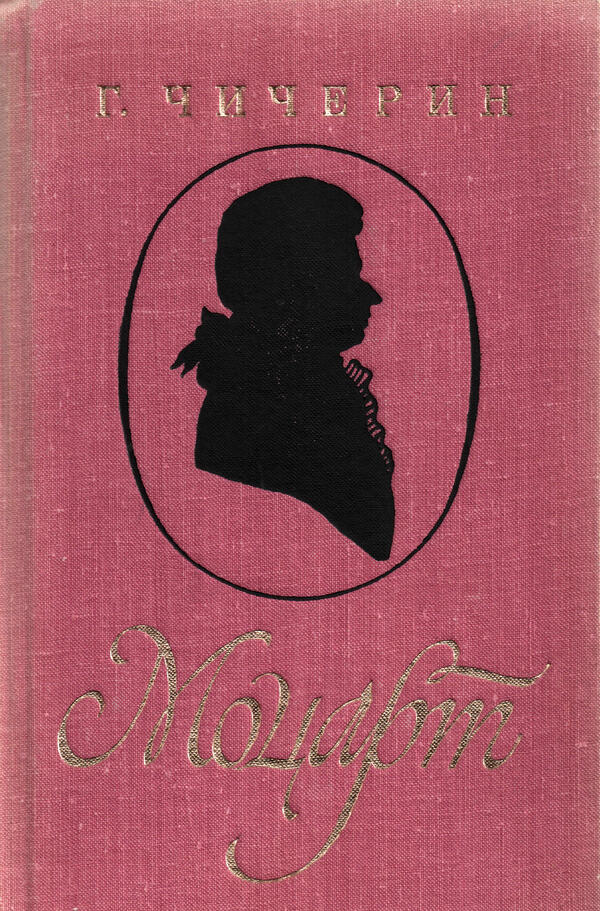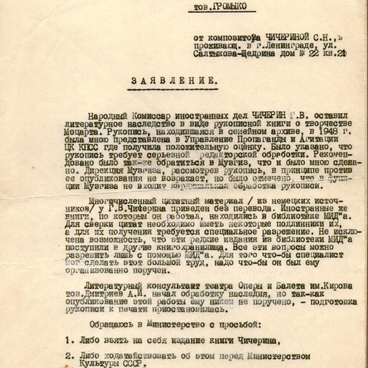In June 1929, Georgy Chicherin began to study the fundamental works about Wolfgang Amadeus Mozart published by that time. Perhaps it was then that he had the idea of a book about his favorite composer. The future author carefully made extracts and recorded his considerations.
In January 1930, Nikolay Chicherin, the elder brother of the explorer and admirer of Mozart’s genius, received the first sketch of the work. Georgy Vasilyevich wrote the work in a swift handwriting without paragraphs and included numerous extracts from German, French and English sources in the original languages, since there was not enough time for translation.
In June 1930, Nikolay Chicherin received a completed manuscript of 236 pages and an accompanying message in which Georgy Chicherin asserted that “this is not a book, but a private letter… <…> I just strung and copied notes and quotations.”
According to literary critics of the XX century, “Mozart” was a “research study” - this definition emphasized both the scientific essence and the originality of the form.
It is noteworthy that the publication included letters to Eugene Braudo, where Georgy Chicherin asked in advance the opinion of an authoritative music historian about the expressive presentation and bold interpretation of the work of Wolfgang Amadeus Mozart.
Other recipients included Anatoly Lunacharsky, a revolutionary and art critic, and Viktor Kubatsky, a cellist and instrument collector. Letters to them demonstrate the sincerity and professionalism of Georgy Chicherin, as well as his progressive views on culture. For example, about the possibility of overcoming the political isolation of the Union of Soviet Socialist Republics through musical connections.
Please note that the author was unable to publish the book during his lifetime. Only in 1970, the musicological artifact, which was kept in private and state archives, met with a mass reader. The text was immediately recognized. This was evidenced by the abundance of materials about it on the pages of newspapers and magazines. For example, in Izvestia and Komsomolskaya Pravda, in Soviet Music and Musical Life. In addition, the volume was quickly republished in Russian in 1971 and 1973 and published in German in 1975.
In January 1930, Nikolay Chicherin, the elder brother of the explorer and admirer of Mozart’s genius, received the first sketch of the work. Georgy Vasilyevich wrote the work in a swift handwriting without paragraphs and included numerous extracts from German, French and English sources in the original languages, since there was not enough time for translation.
In June 1930, Nikolay Chicherin received a completed manuscript of 236 pages and an accompanying message in which Georgy Chicherin asserted that “this is not a book, but a private letter… <…> I just strung and copied notes and quotations.”
According to literary critics of the XX century, “Mozart” was a “research study” - this definition emphasized both the scientific essence and the originality of the form.
It is noteworthy that the publication included letters to Eugene Braudo, where Georgy Chicherin asked in advance the opinion of an authoritative music historian about the expressive presentation and bold interpretation of the work of Wolfgang Amadeus Mozart.
Other recipients included Anatoly Lunacharsky, a revolutionary and art critic, and Viktor Kubatsky, a cellist and instrument collector. Letters to them demonstrate the sincerity and professionalism of Georgy Chicherin, as well as his progressive views on culture. For example, about the possibility of overcoming the political isolation of the Union of Soviet Socialist Republics through musical connections.
Please note that the author was unable to publish the book during his lifetime. Only in 1970, the musicological artifact, which was kept in private and state archives, met with a mass reader. The text was immediately recognized. This was evidenced by the abundance of materials about it on the pages of newspapers and magazines. For example, in Izvestia and Komsomolskaya Pravda, in Soviet Music and Musical Life. In addition, the volume was quickly republished in Russian in 1971 and 1973 and published in German in 1975.



